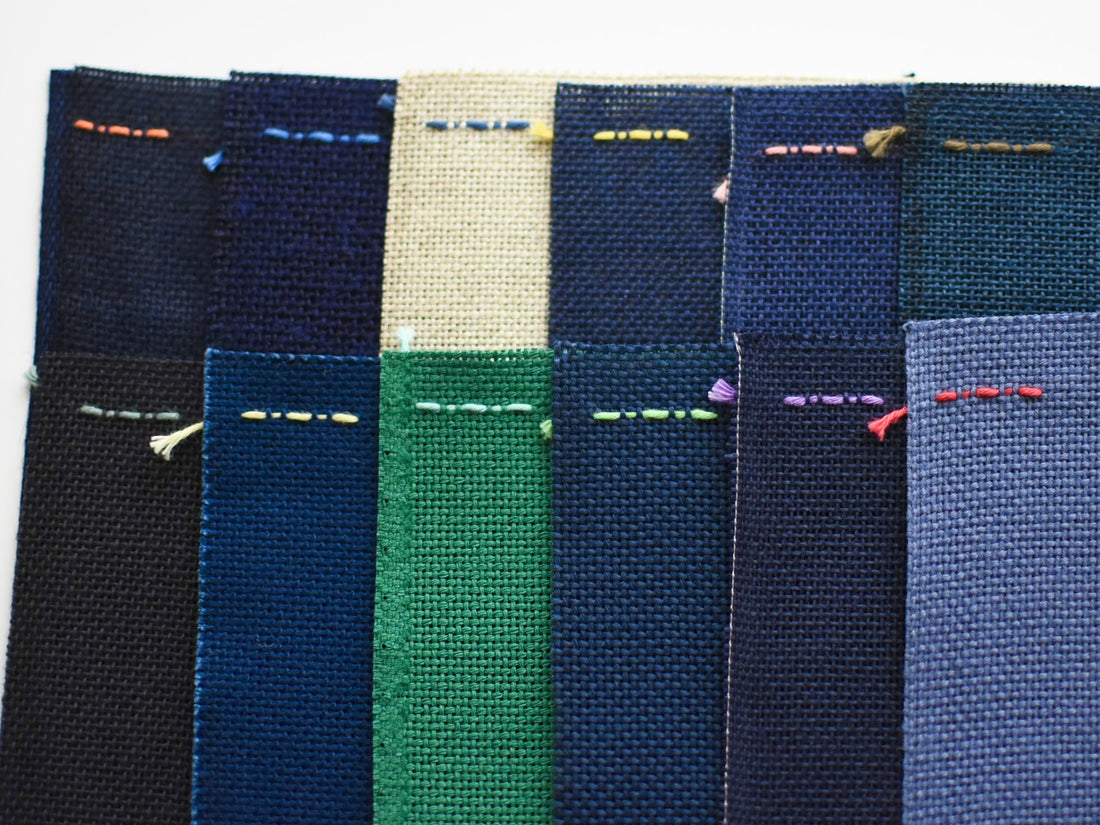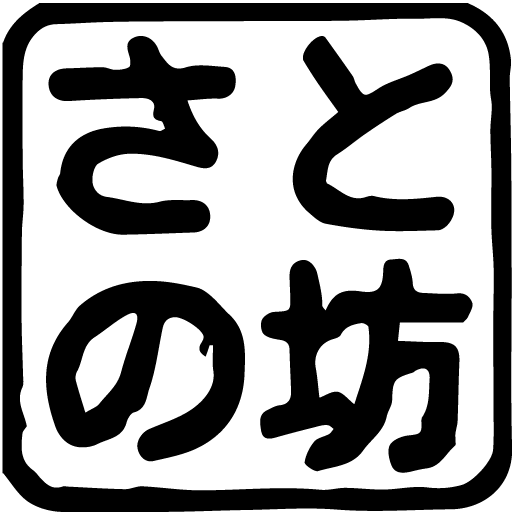
Understanding cloth and thread 2 (number of stitches)
I think that the materials that you first touch at workshops or kits often become the materials for your own koginzashi . If the compatibility of the fabric and thread used at that time or the compatibility with yourself is good, then the kogin time will continue, but what if the compatibility is not good?
If the difficulty of kogin stitching exceeds the fun, such as making it difficult to see the grain, making it difficult to pull the thread, or causing the thread to fall apart, you may not have time to do the next kogin stitch. For someone like me who believes that depending on the encounter with the material, the distance between kogin-zashi and kogin-zashi will come closer, I feel a little disappointed. Therefore, I will explain the characteristics of the materials while actually measuring the weight and sewing with various combinations of cloth and thread. I would be happy if even just one thing made you think , ``I'd like to try this fabric, this thread .''

◆Knowing the materials to find out their compatibility Last year, we announced that we would start a research project titled `` Start Comparing Koginzashi Materials, '' and after a one-year charging period, we began our journey to learn about the materials. The other day, in Learning About Cloth and Thread 1 , we introduced the materials that we will be learning about from now on. Today I would like to give you some basic information about cloth.
◆Congress?
I once had a customer contact me saying that he did not understand the meaning of the word Congress . Congress is said to be a cloth woven for counted stitches such as kogin embroidery and cross stitch. Kogin-zashi creates a well-organized pattern by threading threads through the holes in the fabric, as shown in the photo below. I'm sure some people will get drunk, so I'll take a smaller photo.

◆Count?
When you are looking for cloth for kogin embroidery, you will often hear the word "count" . The count is the number of weaves (the gaps between the threads of the fabric) per inch (25.4 mm) , and indicates the fineness of the weave of the fabric . When you look at fabrics made overseas, you will often see "ct" written on them. 25 count (25 ct) means 25 stitches per inch.
I don't think there are many opportunities to use inches in Japan, but it seems that the inch is derived from the width of the thumb of the hand . When you think about it that way, it becomes easier to imagine counting. Please measure the width of your thumb. Mine was around 20mm. By the way, I also measured my husband's thumb, and it was about 25mm, wow! I was excited by myself. I'm a bit off topic, but rather than thinking in terms of 1 inch = 25.4 mm, I think it's more familiar if you think of it as the number of grains per finger width .
Additionally, there is a type of kogin cloth with a vertical pattern . In that case, the fineness of the grain is often expressed by the number of grains divided into vertical and horizontal grains . For example, in the case of Kogin Dwell, the number of stitches is approximately 9 stitches horizontally and 7 stitches vertically per 1 cm square (quoted from the fabric description section of Shimaya Shop ).
◆Checking the count/number of stitches on the fabric For the fabrics used in this survey, we assumed that we would also be measuring the weight, so we prepared fabrics with a similar mesh size. Below is information on how the fabrics are grouped by number of stitches (per 1cm). Even if the number of stitches is the same, if the specified unit is different (meter, shaku, etc.), the overall length will change.
⚪︎Horizontal approx. 7 stitches, width approx. 9 stitches/cm
Kogin Duel (hemp), Hemp 252, Daruma (hemp)
⚪︎Horizontal approx. 7 stitches, width approx. 8 stitches/cm
Perry pull (cotton), New Congress (cotton), koginbank original kogin cloth (cotton)
⚪︎Horizontal approx. 6 stitches, width approx. 7 stitches/cm
Fancy Hesshan (linen *rayon blend)
⚪︎Approx. 8 stitches/cm (20ct)
Zweigart coke (linen), Olympus linen (linen)
⚪︎Approx. 7 stitches/cm (18ct)
Kensen Congress (cotton), Zweigart Davosa (cotton: 7.1 stitches), Cosmo Embroidery Cloth Congress (cotton)
* Koginbank's fabric is described as having "23 warp threads and 19 weft threads per 3 cm " ( quoted from the koginbank shop fabric description section), but for comparison with other fabrics, the number of warp threads per 1 cm is 19. This is the information that Bo counted and recorded. The exact information is the number of threads per 3cm above. )

(This time, I will line it up with cloth decorated with modoko (the basic pattern of Kogin sashimi))
There is more I want to tell you, but it's getting too long, so I'll continue next time. I have also measured the weight of the cloth, so I would like to take a closer look at whether there is any relationship between the fineness of the grain and the differences between linen and cotton.
◆Regarding research information and photos The information I will be sharing from now on is aimed at those who enjoy Koginzashi on their own, and was researched by Satonobo using materials he kept at home. Please note that depending on the storage environment, there may be slight discrepancies in the count and weight of the fabric you have. Also, unauthorized use of photos is prohibited.
I hope to be a place where you can meet fabrics and threads that you are curious about, and I will continue to study hard so that I can share positive information with you! If you have noticed anything or want to know anything, please let us know. By the way, this book about fibers, `` The best way to understand fiber types and processing, '' was very easy to understand, so I would like to share it with you. I think understanding the mechanism of thread will help you understand its characteristics.

Thank you for your continued support. Let's have fun with Koginzashi!
◆ Quote
Hirosaki Shimaya , “Kogin sashimi materials mail order site” , https://shimaya.info/shop/kogin/fabric/original/douelle.html , ( June 6 , 2023 )
koginbank , From the product description section of the shop's "[1 meter unit] Cotton Kogin cloth (width 36cm)" sales page , https://koginbank.theshop.jp/items/70574668 , ( June 6 , 2023 )
◆References
“Mechanism Illustrated Series: Best understanding of fiber types and processing” Paper version released on June 20, 2012, edited by Japan Textile Engineers Center, ISBN 978-4-7741-5137-3, Gihyo Direct
Satonobou
